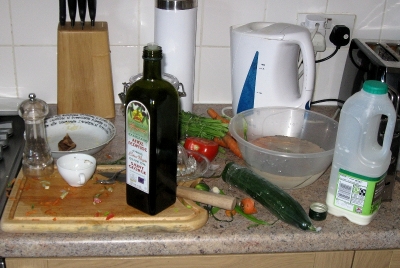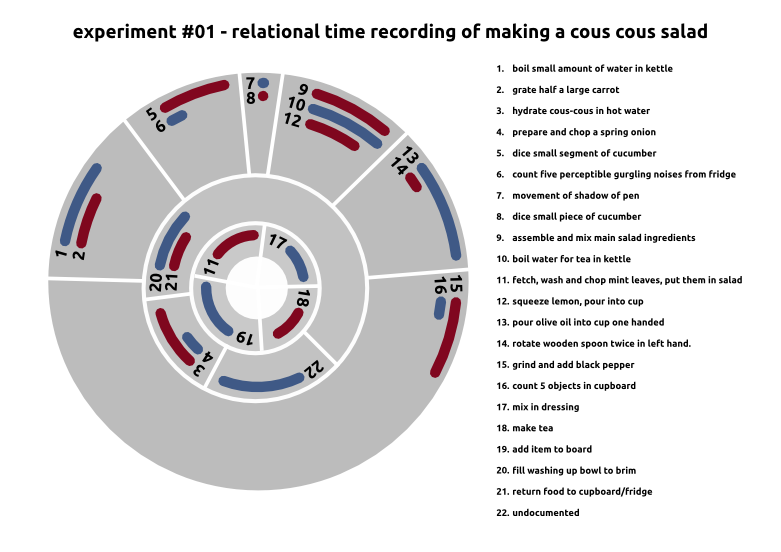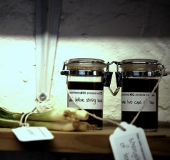
 The above diagram is an outcome of my first full experiment for the Timescales project.
The above diagram is an outcome of my first full experiment for the Timescales project.
For this project, I’m attempting to create transcriptions of domestic time that are both inspired by, but subtley subvert, industrial notions of efficient time management. Here, I’ve made a cous cous salad and recorded the time taken for each process. However, the times only exist in relation to each other and have not absolute value - so for instance, it took me roughly the same amount of time to assemble the salad ingredients as it did the boil the kettle for some tea.
How many ingredients? What kind of kettle? How much water? All these questions are left unanswered, and as such the knowledge produced here is strictly speaking useless for anyone without intimate contextual knowledge of the actual process. That is, useless for anyone but me.
What was most curious for me was how this seemingly whimsical process of recording actually forced me to be more regimented than if I was using a timer. Each process had to be put against one that could run unattended, and in the end I’m pretty sure the salad took me three times longer than normal to prepare.

 Time Scales
A set of experiments that explore time as a relationship between physical processes.
Time Scales
A set of experiments that explore time as a relationship between physical processes.